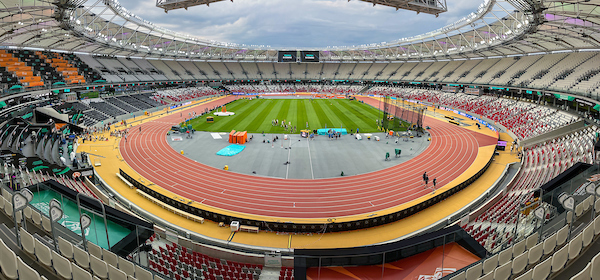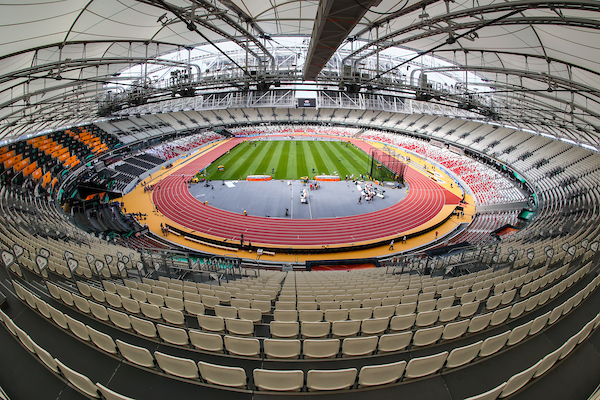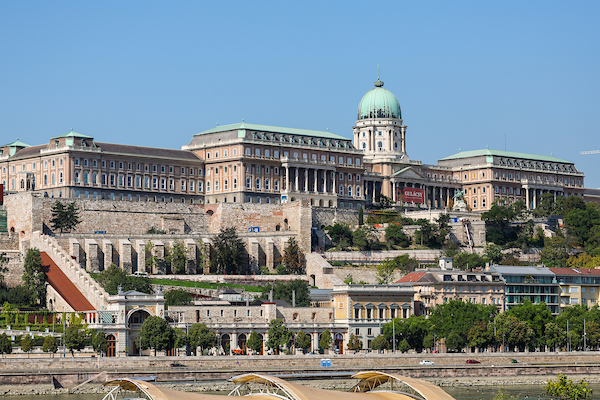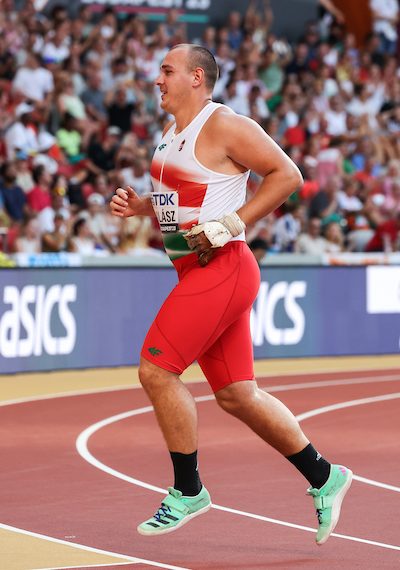FROM RUTGERS TO REUTERS:
TRACKMAN BALAZS KORANYI
ANALYZE THE 19TH WORLDS
By ELLIOTT DENMAN
Remember Balazs Koranyi?
I sure do. Lots of track fans around New Jersey – and the rest of the world – remember him, too.
He traveled from Walter Johnson High School in Maryland to Rutgers, the State University of New Jersey, and then his real travels started – back to Hungary, the Koranyi family’s historic homeland, and the global track and field circuit.
He’s still in the books as the RU 800-meter record-holder and in the RU Hall of Fame for all his brilliant racing for Coach Mike Mulqueen’s Scarlet Knights.
But his finest racing deeds came for Team Hungary: Two Olympic appearances, reaching the 800 semis at Atlanta in 1996 and Sydney in 2000. A fourth at World Indoors and a third at European Indoors. PRs of 1:45.39 out and 1:46.47 in. National records in and out.

That was some two decades-plus ago – but he’s never stopped traveling. He’s now Thomson Reuters’ chief correspondent, focused on the economic, business, and political events of mostly Europe and the world. He’s putting his RU degree in political science to great work. As Linked In puts it, “in managing a team of reporters. In a changing media landscape, (he is) always striving for innovation while maintaining the gold standard in journalism.”:
So obviously, he’s well equipped to analyze the story behind the story of the recently concluded 19th World Championships of Track and Field.
Like almost all in Hungary, he’s delighted with the huge success of the Worlds – that terrific Nemzeti Atletikai Kozpont stadium, those great crowds for nine straight days, all those magnificent performances by the fastest-strongest-leaping representatives of 202 nations, all those TV hours and their grand vistas of Buda and Pest and the long journey the capital city has taken from a horrendous world war to years in the Soviet orbit to its modern-day status as a member of the European Union and NATO.

He was there in the early days of 19th Worlds – “I bought a ticket like everyone else,” he tells you. “And the quality of the performances was just fantastic. Top match-ups, fantastic results. Great competition.”
But there was a downside, too.
It came at a cost in major-major forints – the Hungarian currency – that will surely have many zeroes attached when all is toted up.
“In Hungary, though, all that didn’t matter,” he said. “Cost didn’t matter. The brand-new stadium was wonderful. That part was all good.”
Then again, he reminds you that the definition of Hungarian-style democracy isn’t quite the same as the American definition, that the prime minister’s (Viktor Orban’s) wishes rarely go unheeded.
And so a swath of old and unused industrial wasteland was ordered cleared and that magnificent stadium erected. Athletes will always say, “I want to compete in a place like this,” said Koranyi. “But it is much too big, far too big for regular use,

Budapest, Hungary
August 19-27, 2023
“So it will now be scaled back to a smaller, mid-size stadium, with perhaps 15,000 seats. But its future is not that simple.”
He concurs that bringing the Worlds to Budapest was a “good and noble venture” and a showcase event that might support a future Olympic bid. Then again, he now knows that its citizens will be footing a lot of very large bills at a challenging time in their nation’s history.
“Hungary has the highest inflation rate of any nation in Europe, about 10 percent right now,” he reminds you. “America is about 4.5 percent, the rest of Europe about 5 percent.”
While the Worlds were superb, Hungary’s own medal count was not. Its 9-day total was a single bronze. In a sense, it was keeping pace with several past editions.
Canada drew a 0-0-0 blank at Edmonton in 2001. France was 1-0-0 at Paris in 2003, Finland 0-0-1 at Helsinki in 2005, Japan 0-0-1 at Osaka in 2007, and Korea 0-0-1 at Daegu in 2011.

Budapest, Hungary
August 19-27, 2023, photo by Kevin Morris
Speaking of a home-nation edge, Hungary’s Bence Halasz may have been the most-cheered athlete in the meet. Six-foot-one, 190 pounds, the 26-year-old is a lot smaller than most of his rivals on the global hammer-throwing scene.
But a lot lither, a lot quicker in the ring.
Wind him up, see him twirl 1,2,3 and 4 times, and watch the flight of the 16-pound ball-on-a-wire before it disappears in the distance.
And then see it re-emerge and plop down into the turf on the other end of the stadium.
He let one fly 80.82 meters to take the lead in the first round of the finals and – just as you’d expect – got the home fans (whose ranks included family, friends, and Prime Minister Orban) loudly, proudly, humongously excited.
“Ria-Ria Hungaria” became their battle cry.
Four more rounds went by before Canadian longshot Ethan Katzberg lofted one 81.25 to edge in front. And then Olympic champion Wojciech of Poland flung it 81.02. And now Halasz was third – and there he stayed.

Five-time World Champion Pawel Fajdek of Poland was relegated to fourth.
For Halasz, his bronze meant the world.“It’s a wonderful feeling,” he said. “The crowd gave me such strength that I really felt it was coming from beyond me.” But seven more days flew by – with zero more Hungarian medals.
Like everywhere else, Hungarian sports leaders continue to search for the most promising youngsters. And track needs to recruit its fair share to maintain pace.
“The World Championships will definitely be an incentive,” said Koranyi. “They will be remembered for a very long time.”
He surely hopes those visions are retained – for years and years ahead. And, forever aware of its economic pulse, that his nation can find a way to afford them.
Author

One of the finest and most prolific writers in our sport, Elliott Denman has written about our sport since 1956, when he represented the US in 1956 Olympic Games at the 50k race walk, the longest event on the Olympic schedule. A close observer of the sport, Elliott writes about all of our sport, combining the skills of a well honed writer with the style of ee Cummings. We are quite fortunate to have Elliott Denman as a friend and advisor.
View all posts






















